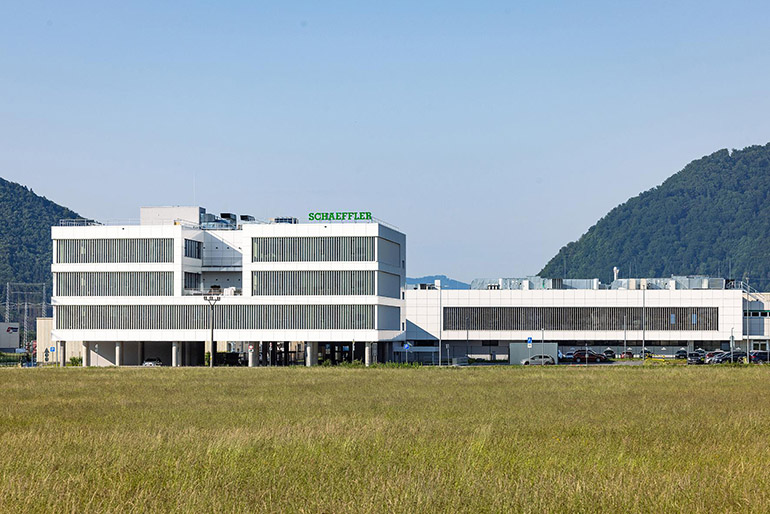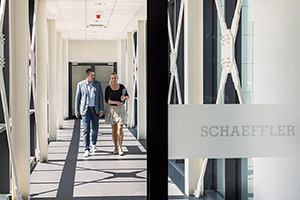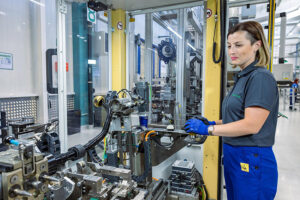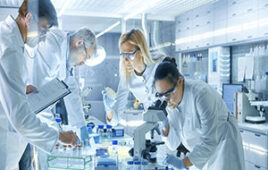
Schaeffler opens a new development center in Kysuce, Slovakia. The new development center as well as the new testing facilities represent an investment of about 20 million euros for Schaeffler.
Schaeffler is expanding its global development activities for advanced mobility solutions. As part of this, the company has now opened a new state-of-the-art development center at its location in Kysuce, Slovakia. The center develops products and components for electromobility as well as chassis systems for applications such as automated driving. The global automotive and industrial supplier is also expanding its existing testing facility in Kysuce by adding new laboratory and testing equipment and test stations. The new development center and the testing facility upgrade together represent an investment of about 20 million euros for Schaeffler. “The ability to innovate has never been more critical to our company’s success,” said Matthias Zink, CEO of Automotive Technologies at Schaeffler AG. “As a future-oriented technology company, Schaeffler is therefore investing heavily in research and development — in Kysuce and worldwide.”

The new development center’s design is geared towards New Work, with ultra-modern office equipment, dedicated communication, and collaboration zones, and “gravity points” where employees can network and share ideas. Photo by Schaeffler (Juraj Sedlák)
Schaeffler’s Kysuce location has a workforce of about 4,300 people from 20 nations, more than 350 of whom work in development. The company aims to have as many as 500 developers working there on future mobility by 2025. To achieve this, Schaeffler is creating a range of new positions at the location, focusing on partially and fully electrified drive technologies such as hybrid modules and electric axles. “The Kysuce region is ideal for Schaeffler. It means we benefit from world-class universities and research institutions with relevant technical expertise and have access to Slovakia’s best and brightest development specialists,” said Milan Jurky, the managing director in charge of Schaeffler’s campus in Kysuce.
Innovating for tomorrow’s mobility on a space the size of a football field

Schaeffler’s Kysuce location has a workforce of about 4,300 people from over 20 nations, more than 350 of whom work in development. The company aims to have as many as 500 developers working there on future mobility by 2025. Photo by Schaeffler (Juraj Sedlák)
The newly built facilities comprise a floor area of around 8,000 m2: 4,000 in the four-level development center plus another 4,000 for testing stations and equipment. Construction work on the new development center building began at the end of 2021, and now, one and a half years later, the first employees are moving in. The entire building’s design and fitout are geared towards New Work, with ultra-modern office equipment, dedicated communication, and collaboration zones, and “gravity points” where employees can network and share ideas. “We are responding to today’s increased need for flexible and digital collaboration,” said Jurky. “We’re giving our people workspaces that are fit for the future.”
The new center caters to a wide range of development activities for new products and customer-specific solutions. These activities include system and software development, simulation and testing, hardware design, and mechanical product design. The development center’s specialists also undertake a comprehensive range of project management activities for international customers from the automotive industry. In the adjoining factory halls, Schaeffler assembles motor and transmission systems, an extensive array of bearings, actuator systems, components for electric axles and hybrid drives, and chassis actuators such as electromechanical active roll control systems. In all of this, the company is benefitting from the tight integration of its development and manufacturing activities at one location.

In the factory halls, Schaeffler in Kysuce assembles motor and transmission systems, an extensive array of bearings, actuator systems, components for electric axles and hybrid drives, and chassis actuators such as electromechanical active roll control systems. Photo by Schaeffler (Juraj Sedlák)
Kysuce: part of a strong global development network
The new development center in Kysuce is part of a powerful global network comprising around 8,000 employees at 20 research and development locations worldwide. “At more than half of our development locations, we are working on future-ready electrified powertrain and mobility solutions and innovative chassis solutions for our customers worldwide,” said Dr. Jochen Schröder, Schaeffler’s head of E-Mobility. The development centers for modern powertrain and mobility solutions include Wooster and Troy, U.S.; Puebla, Mexico; Bühl and Herzogenaurach, Germany; Szombathely, Hungary; Svitavy, Czech Republic; Pune, India; Seoul, South Korea; Yokohama, Japan; as well as Taicang and Changsha, China. “Our strategy revolves around having a global development network with distinct local specialties and responsibilities. This global structure also means that we are always close to our customers and can respond swiftly to local needs and requirements,” said Schröder.




Dear Manager!
Almost all industries require reliable mechanisms with stepless change of transfer functions.
The creation of such mechanical device, which is independent, depending on the moment of resistance at the exit, changes its transmission ratio within( 1 ≤ I ≤ ∞, сapacity transfer isn’t limited) resolves many problems of machine industry and can lead to the results bringing the equipment to a new, higher level of development.
The idea of such mechanism exists for a long time. In the engineering literature it is commonly called Transformer of Torque (TT). TT is not an inertial.
TT allows implementing the basic principle of dynamics: “Winning in force, losing in speed; winning in speed, losing in force”, and it is considered as cybernetic system. In the long term it is a mechanical HOMEOSTAT, the device exercising control in conditions of initial uncertainty, on the basis of the current information on the varying parameter. The device allows you to adapt the state mechanism to the entropy of the environment.
Using this mechanism especially in the transport machines would give them new qualities reliability, durability, reduced wear, reduced power and fuel consumption while maintaining performance, reduction of dynamic impact on the transmission, exclusion of torque transmitting friction units from transmission design … all of this will bring the car to the ideal, which is known to exist only in theory or, as the goal.
I have developed a kinematic configuration and “The Theory of Mechanical Transformer of a Torque”.
Table of contents of the theory
1 Introduction
2 Kinematics
2.1 Assumptions, assumptions, definitions, conclusions
2.2 The basic scheme for realization of TKM
2.3 Analysis of basic mechanism
3 Synthesis of basic mechanisms
4 Loudspeaker
4.1 General part
4.2 Basic law TKM 30 loudspeakers
4.3 Description of work of TT
4.4 Conclusion of a formula of dependence of the transfer relation on dynamic parameters.
4.5 Possible designs.
4.6 Dependence of change of the moment at the exit ΔМi from change of angular speed at the exit Δωi
5 Conclusion
Regards
Alexey Spichak. h.t+77112306901: mt +77089194178;
[email protected]